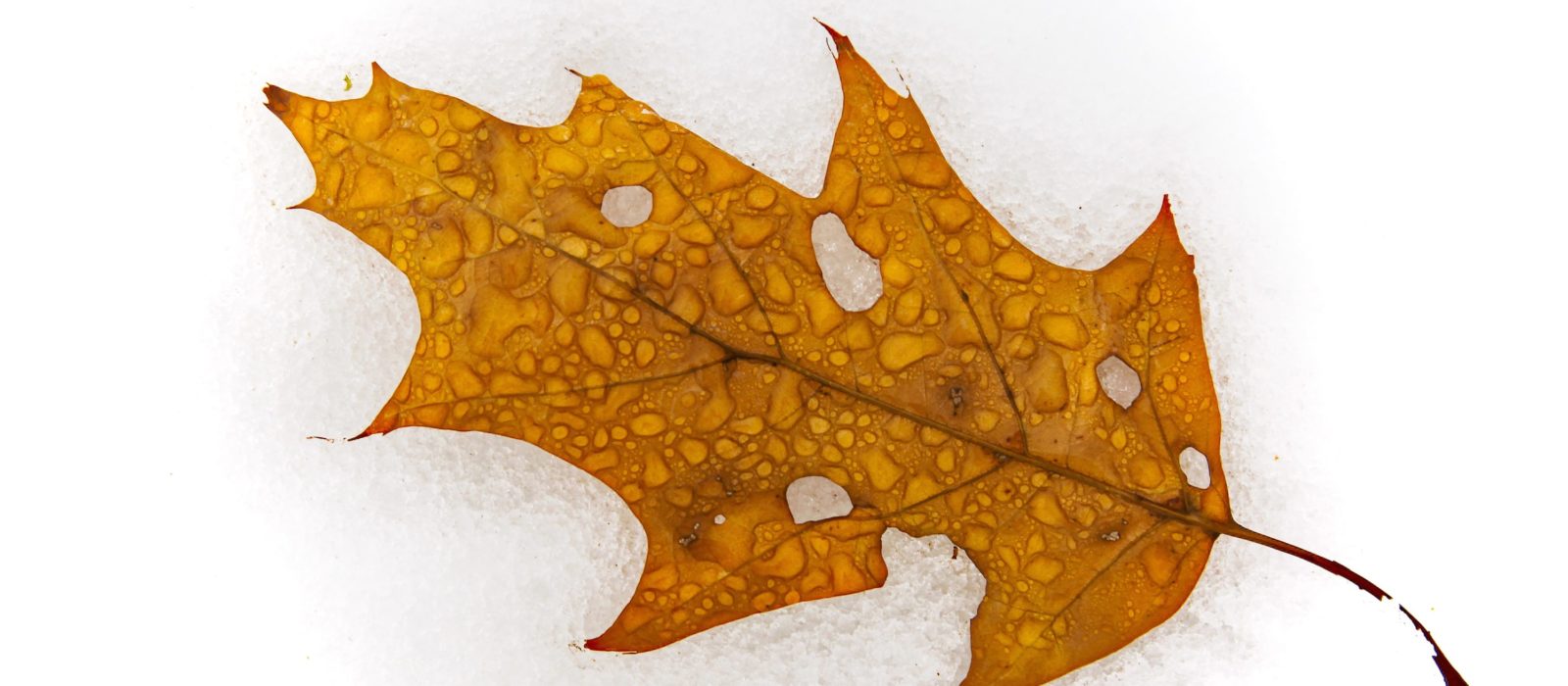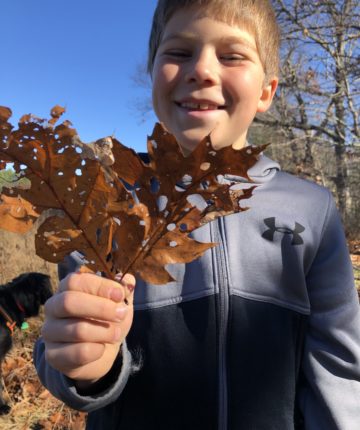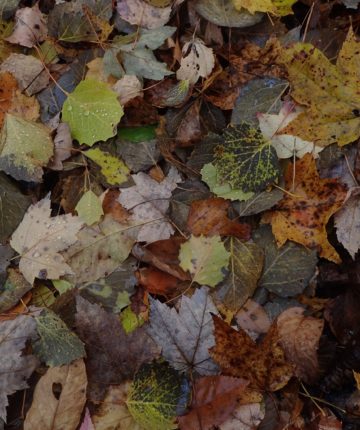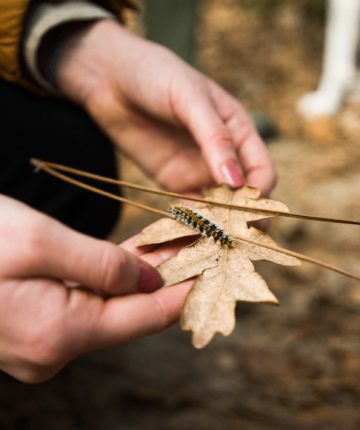
Holey Leaves
This is the time of year to pick up a fallen leaf and explore it. Can you find a leaf that is complete without any holes, or dead spots on it? It is next to impossible. Most leaves have been homes or restaurants for a variety of insects and other animals. From caterpillars and beetles to slugs and snails, many animals depend on leaves to survive.
Search for nibbles and scars of where small bugs have tunneled through the leaf’s tissue. See if you can find raised bumps on the surface of the leaf, where an insect larva spent it’s days eating and resting before transforming into a fly. Hold the leaf up to the sunlight and look at the leaf, searching for where a little creature nibbled away just some of the leaf, leaving behind a brown lacy skin.
Pick up an oak leaf this year in New England and you might see a leaf riddled with almost perfectly rounded small holes. What could have possibly made such a smooth and mechanical looking hole?
Well it wasn’t a gnome gone wild with a paper-hole punch.
Rather it was a very small female fly in the spring. The oak shothole leafminer (Japanagromyza viridula also referred to as Agromyza viridula) is very tiny, only about 1/10th of an inch, and feeds on the buds and newly opened leaves of red and white oak trees. The fly’s mouth-parts are too small to pierce the bud or the newly opening leaf. Instead she uses her ovipositor—that’s the part of her body that is used to lay eggs. Using her ovipositor like a small circle-saw, she saws into the bud or leaves. Once the leaf’s sap begins to run the oak shothole leafminer fly, turns around and laps it up. As the leaf unfurls the swiss cheese-like holes remain but enlarges to 6 times the size it started at as it grows.
So next time you are out exploring, pick up a leaf! Look at how it not only helped a tree grow but it also gave some food or housing to a little creature.



